The Belgian Malinois, one of several Belgian dog breeds, is an intelligent, confident, hard-working breed that is commonly used for police and military work. They are generally healthy dogs who need a great deal of physical and mental interaction from their owners.
These dogs come in 14 colors, five of which the AKC recognizes as standard colors. Before deciding on a puppy for your family, consider whether AKC recognition is important to you. If you’re getting a family companion, color may not be that important, but if you plan to breed or show your dog, you will likely be more choosy.
Non-Standard Belgian Malinois Colors
Maybe you aren’t interested in AKC standards or want a more unique colored Belgian Malinois. If that is the case, this breed comes in nine other colors that the AKC considers non-standard or does not recognize at all. These colors are merle, white, black, brindle, cream, cream sable, gray, gray sable, and liver. Non-standard colors are still purebred Belgian Malinois and can be registered as such; however, they cannot be shown according to the AKC. The unrecognized colors, white and merle, cannot be registered because they often have health problems and are not bred by reputable breeders for this reason.
Merle
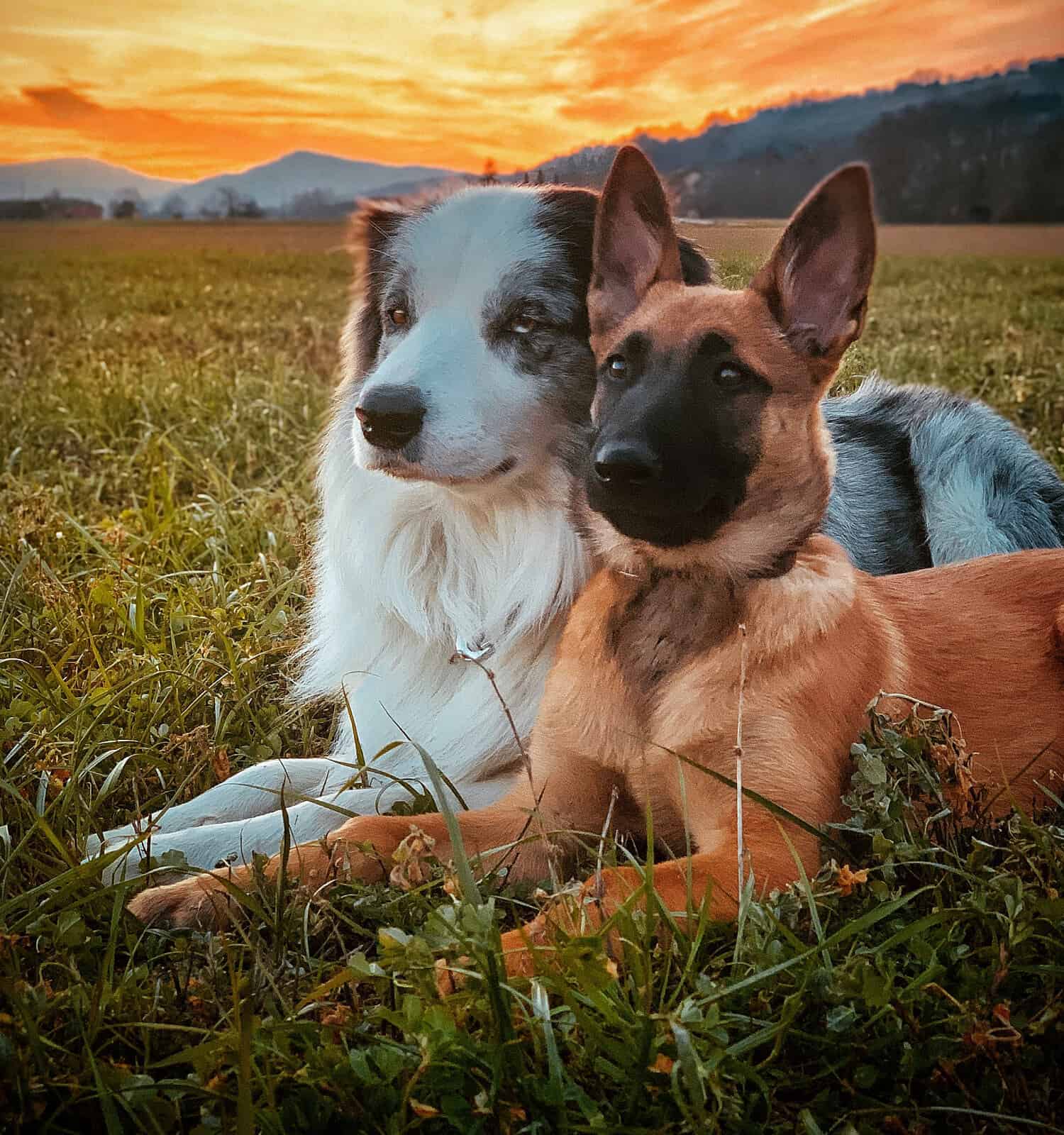
Merle is a common color for Australian shepherds but not for Belgian Malinois.
©The Collienois/Shutterstock.com
Blotches of color on a white base coat are characteristic of their merle pattern. They may also be tri-colored. This is a common pattern in some breeds, such as Australian shepherds, but in other breeds, it can cause health problems, particularly if they are double merle and inherit the gene from both parents.
White
White is a very rare Belgian Malinois color, and while it is beautiful, it is not desirable because white dogs of this breed tend to suffer from genetic issues such as eye problems or deafness. They also have a much shorter life expectancy.
Brindle
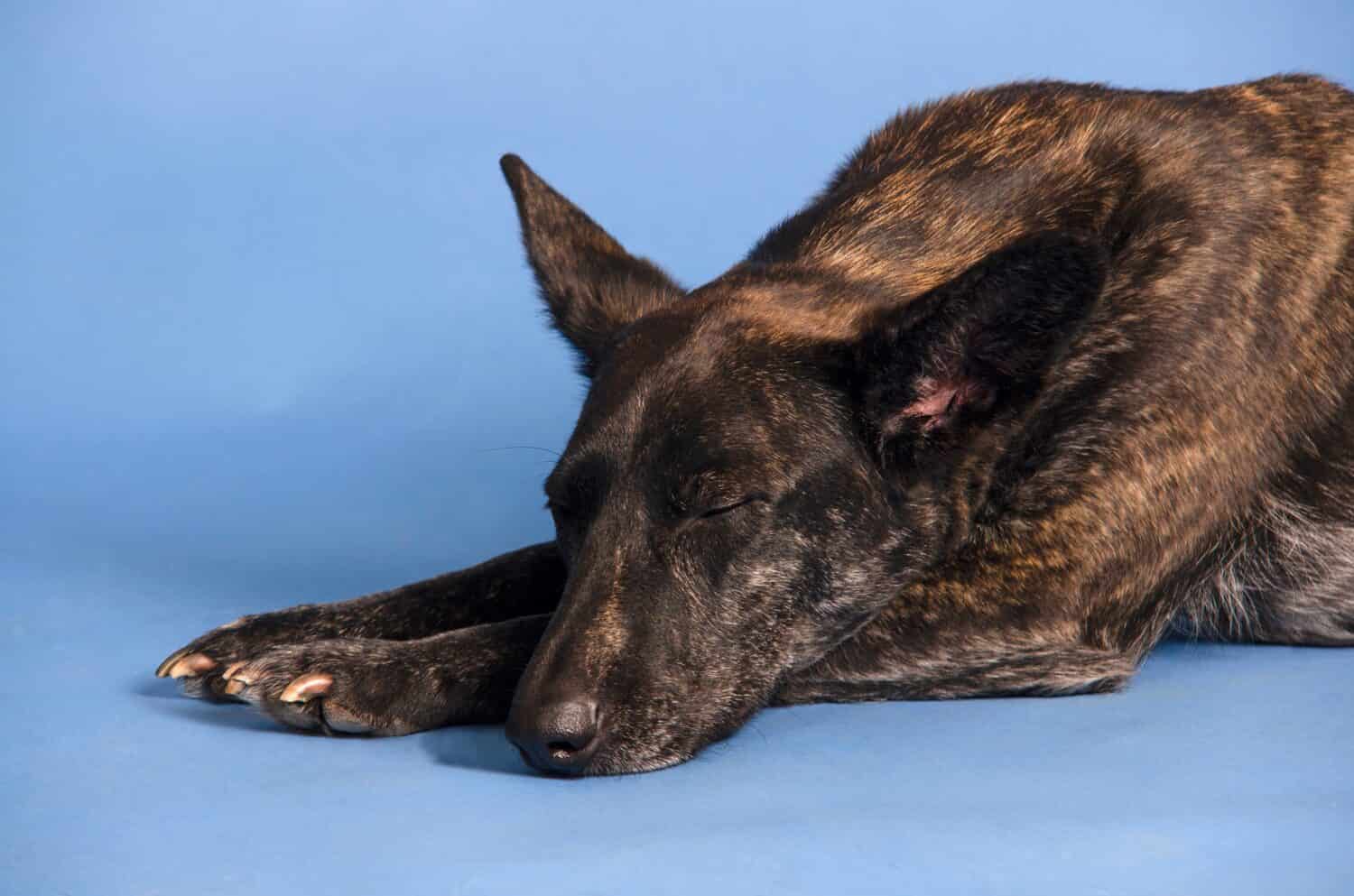
Brindle coloring is rare for this breed.
©Maria Sidelnikova/Shutterstock.com
The brindle coat color is reminiscent of tiger stripes and is most commonly found in the fawn and red Belgian Malinois colors. Brindle-colored dogs of any breed are unique and sought after, and the Belgian Malinois is no exception, with brindle being the rarest color of the breed.
Black
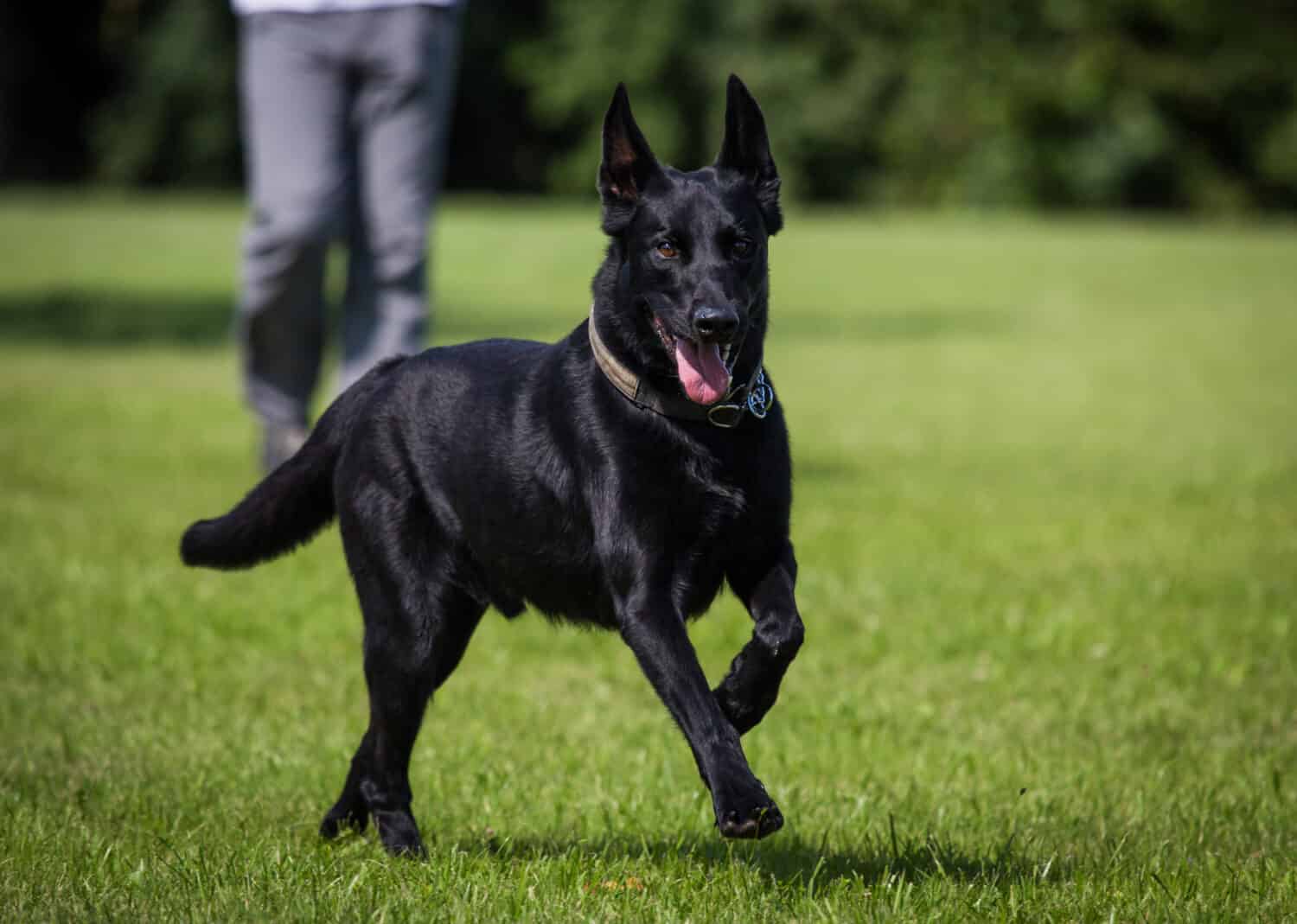
While not a common color, the black coat is popular.
©msgrafixx/Shutterstock.com
While not a common color, black Belgian Malinois dogs are in high demand. These dogs often have light-colored eyes, which is unusual given that the breed typically has dark brown eyes.
Gray
Gray Belgian Malinois are sometimes referred to as blue. Their coat is typically charcoal gray all over, with no black mask. Often, this dog’s eyes will also appear charcoal gray or blue.
Gray Sable
Gray sable is a very rare color that is difficult to distinguish from the gray color variation. As with other sables, the tips of the hairs are black but tend to blend well with the gray of the rest of the hair, creating an ombre effect. The gray sable will also have a lighter eye color as well as a lighter nose.
Cream
Cream-colored Belgians are a light whitish-yellow, much lighter than the fawn color of the dog. Still, true to its breed, cream Belgian have the black mask you expect to see.
Cream Sable
Cream sable is another unique color that, like the other sable colors, is present when the individual hairs have black tips. This color variation has a less prominent black mask than other colors.
Liver
The liver-colored Belgian Malinois has a recessive gene inherited from both parents, giving it a yellow, cream, or red coat with no black or gray. This dog will also have a liver-colored nose and amber eyes.
AKC Standard Belgian Malinois Colors
The AKC recognizes five Belgian Malinios colors: fawn, fawn sable, mahogany, red, and red sable. These colors are the most common, and each is beautiful in its own right and has no impact on the temperament of the dog, so you can feel confident selecting the color you like best.
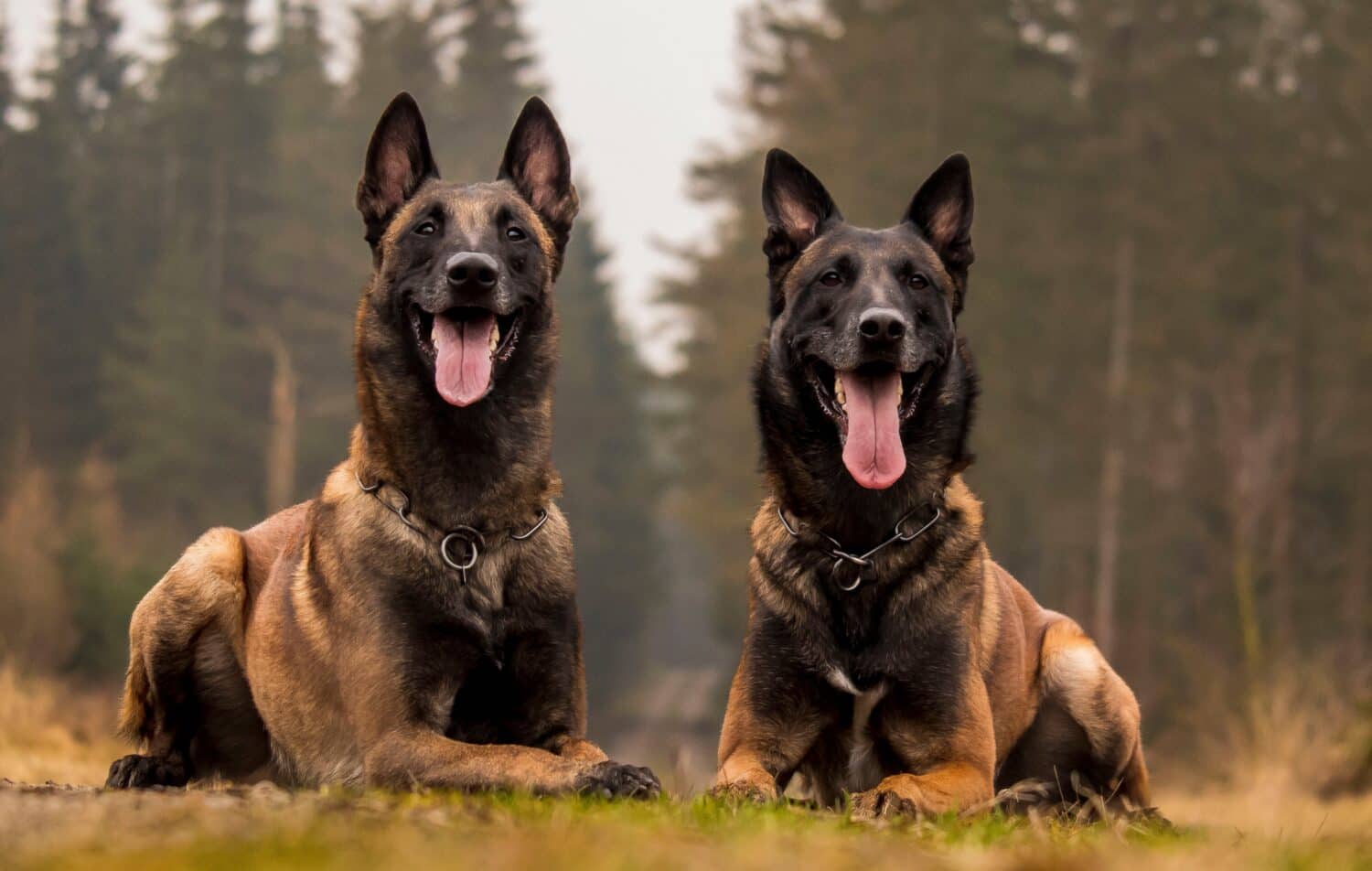
Law enforcement often uses this breed.
©Benjaminj88/Shutterstock.com
Mahogany
The fairly common mahogany color of Malinois is a dark reddish-brown that may appear almost black. This dark coloring makes seeing the dog’s black mask difficult, but it is still there. While mahogany is considered a standard AKC color for the breed, it is less common than the other standard colors.
Fawn Sable
Fawn sable is similar to the fawn color but a bit darker because each hair is fawn-colored with a black tip. A fawn sable Malinois will still have a black mask, but it will be less apparent due to the darker color of the rest of the dog’s coat. It is a relatively common color.
Red
The red-colored Belgian Malinois is a lighter red shade than mahogany and is the third most common color. Because it isn’t as dark, seeing the dog’s black mask is easier. This color can range from light to dark, with the lightest looking similar to fawn.
Red Sable
Like the fawn sable, the red sable coat consists of red hairs with black at the tips. Mals this color can appear to be almost black. It is the second most common color.
Fawn
The fawn Belgian Malinois is a light tan color, similar to the coloring of a deer, and is the most common color of the breed. The dog’s entire body will be this color except for the face and ears, which should sport the typical black mask this breed is known for.
Choosing Your Belgian Malinois
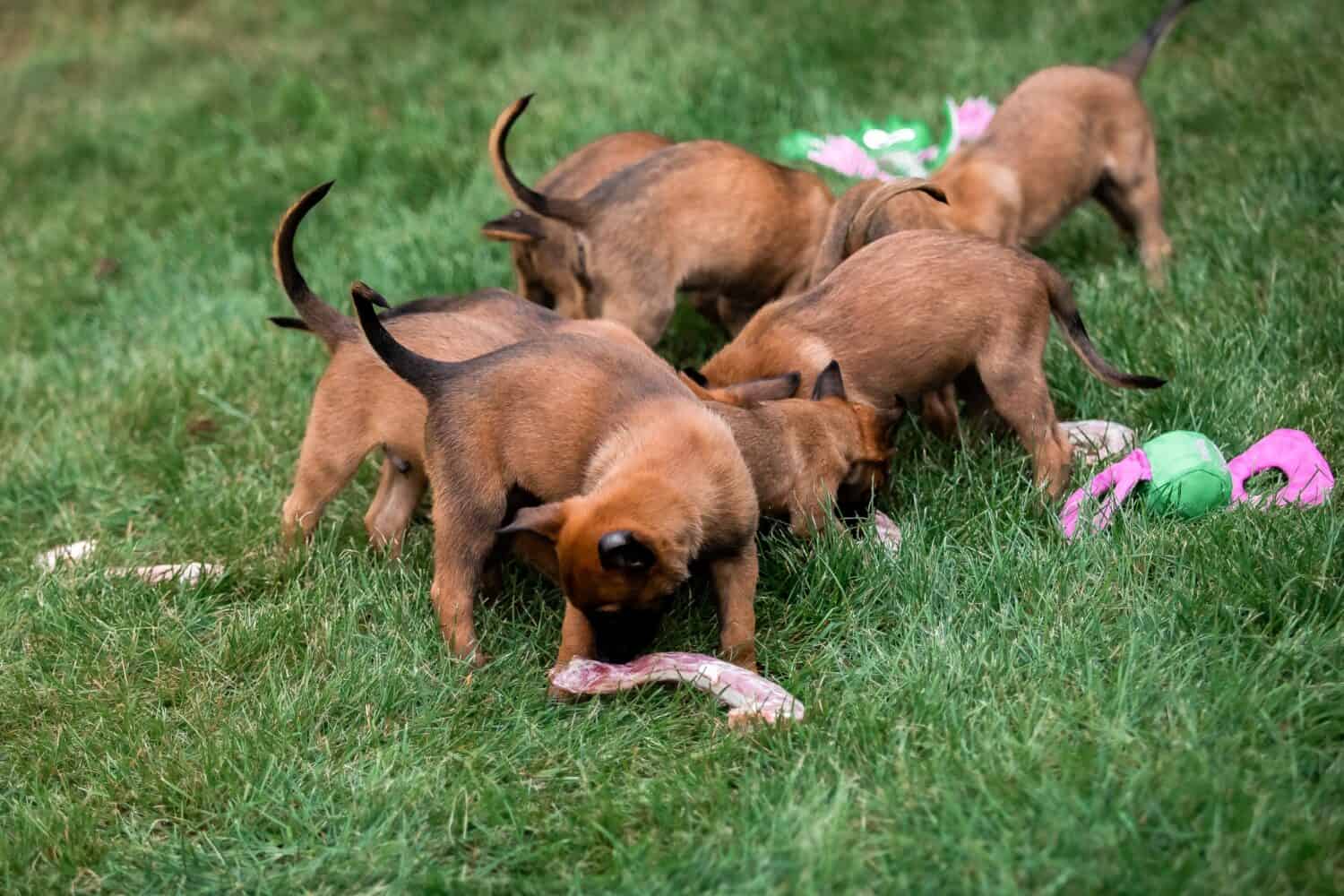
Before you choose a puppy, be sure you are ready to put plenty of time into training.
©OlgaOvcharenko/Shutterstock.com
Keep in mind that non-standard colors are less common and, therefore, usually more expensive. Deciding on a budget before you start looking for your new family member is a good idea because these dogs can cost thousands of dollars.
Coat color is not usually an indication of health or temperament, aside from the white and merle colors, which may carry genetic health concerns. Reputable breeders will not purposely breed for these colors. When choosing a Belgian Malinois for your family, do your research, so you know what to expect, and ensure you are working with a responsible breeder who takes the health of their dogs seriously, regardless of the colors they produce. Good breeders will help you choose a puppy with a personality that will fit your family dynamics.
Summary of Belgian Malinois Colors: Rarest to Most Common
| Number | Color |
|---|---|
| 1 | Merle |
| 2 | White |
| 3 | Brindle |
| 4 | Black |
| 5 | Gray |
| 6 | Gray sable |
| 7 | Cream |
| 8 | Cream sable |
| 9 | Liver |
| 10 | Mahagony |
| 11 | Fawn sable |
| 12 | Red |
| 13 | Red sable |
| 14 | Fawn |
Ready to discover the top 10 cutest dog breeds in the entire world?
How about the fastest dogs, the largest dogs and those that are -- quite frankly -- just the kindest dogs on the planet? Each day, AZ Animals sends out lists just like this to our thousands of email subscribers. And the best part? It's FREE. Join today by entering your email below.
Thank you for reading! Have some feedback for us? Contact the AZ Animals editorial team.







